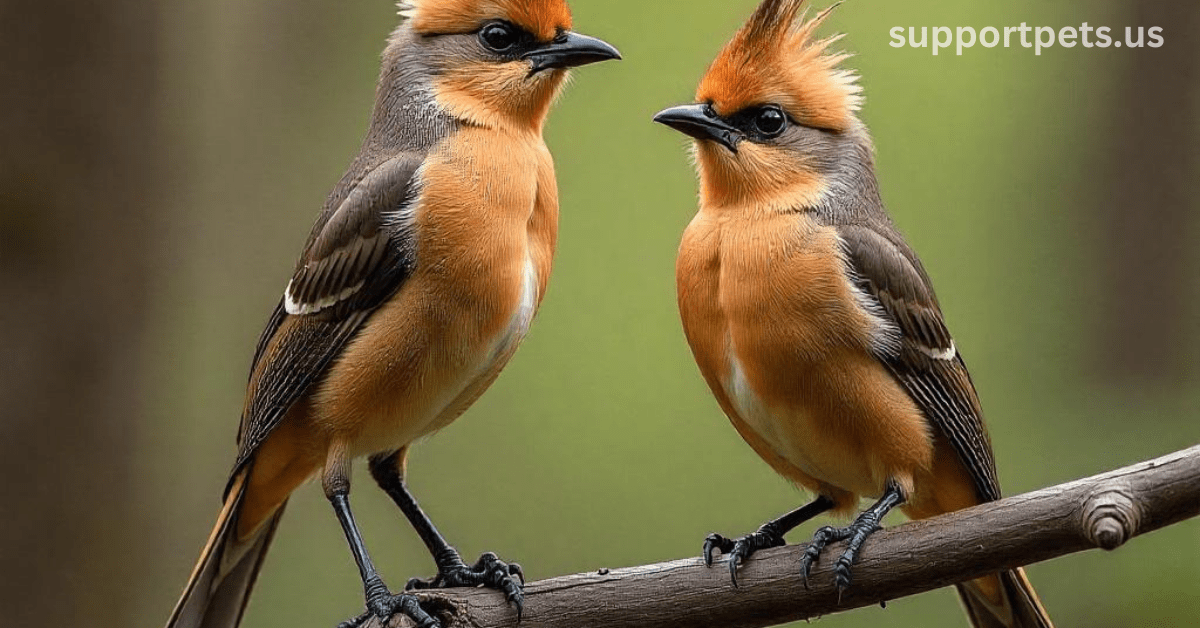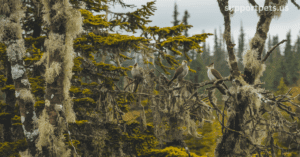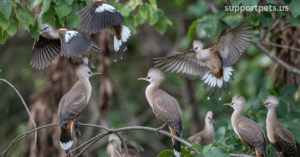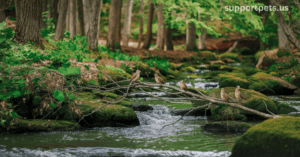The crested woodland bird is a captivating species found in dense forested areas. Known for its distinctive crest, this bird stands out among other avian creatures. Its behavior, diet, and habitat make it unique in the bird-watching community. In this article, we will explore various aspects of this bird, from its physical characteristics to its importance in the ecosystem. Whether you’re a seasoned bird watcher or a beginner, this guide offers valuable insights.
Physical Characteristics of the Crested Woodland Bird
Crest and Plumage
One of the crested woodland birds’ most distinguishing features is its prominent crest. The crest usually sits on top of the bird’s head, flaring up when the bird feels excited or threatened. Its plumage often consists of a combination of earthy tones like brown, green, and hints of yellow. These colors allow the bird to camouflage in its woodland habitat effectively.
Size and Shape
The bird is relatively medium-sized compared to other woodland species. It typically measures around 20 to 30 centimeters in length. Its wingspan can reach up to 50 centimeters, making it an agile flier in dense forests. The bird’s slender body and long tail help with quick maneuvers through trees.
Habitat and Distribution
Preferred Habitats
The crested woodland bird thrives in dense, forested regions, primarily in temperate and tropical climates. These birds prefer areas with ample tree cover, which provides both food and nesting sites. They are usually found in old-growth forests, though some species adapt to secondary forests.
Geographic Range
This bird species is most commonly found in North America and parts of Europe. Some migratory patterns have been observed, particularly during colder seasons when they travel to warmer areas for better feeding opportunities. However, many crested woodland birds are year-round residents in their habitats.
Read More: German Shepherd Husky Mix: A Unique Hybrid Breed
Diet and Feeding Behaviour
Diet
The diet of the bird consists of insects, seeds, and small fruits. Their sharp beaks are perfect for cracking open seeds or capturing small prey like beetles and caterpillars. During the breeding season, they tend to eat more protein-rich insects to support their growing chicks.
Foraging Habits
These birds are primarily foragers, often seen hopping from branch to branch in search of food. They are most active during the early morning and late afternoon, when their prey is also most abundant. Their keen eyesight helps them spot food from a distance.
Breeding and Nesting Habits
Mating Rituals
The crested woodland birds engages in complex mating rituals that often involve displays of their crests and calls. Males are known to fluff their plumage and sing intricate songs to attract females. Once a pair bonds, they typically remain together for the breeding season.
Nesting Sites
These birds prefer to build their nests in the higher branches of tall trees. The nests are often made from twigs, leaves, and other plant materials. Females lay between 3 to 5 eggs, and both parents share the responsibility of incubating the eggs and feeding the chicks.
Importance in the Ecosystem
Role as Seed Dispersers
The crested woodland bird plays a critical role in seed dispersal within forests. By eating fruits and excreting seeds in different locations, they help regenerate plant life. This symbiotic relationship between birds and plants is essential for maintaining biodiversity in woodland ecosystems.
Pest Control
By feeding on various insects, the crested woodland bird helps control pest populations. This makes them beneficial not only to their forest habitats but also to nearby agricultural areas. Farmers often encourage the presence of these birds to naturally manage insect pests.
Conservation Status and Threats
Current Conservation Status
The conservation status of the crested woodland bird varies by region. In some areas, their populations are stable, while in others, they are declining due to habitat loss. Deforestation and urbanization pose significant threats to their natural habitats. Organizations are working to protect these birds through forest conservation efforts.
Human Impact
Humans have a direct impact on the survival of the crested woodland bird. Logging, land development, and pollution all contribute to the degradation of their habitats. Protecting woodland areas and promoting sustainable practices are essential for the future of this species.
Birdwatching Tips for Observing the Crested Woodland Bird
Best Time to Spot
The best time to observe the crested woodland bird is during early morning hours when they are most active. Look for them in areas with dense tree cover, as they are more likely to forage and nest in such environments. Patience is key when birdwatching, as these birds can be elusive.
Recommended Gear
Binoculars with high magnification are essential for spotting the crested woodland bird in its natural habitat. A bird identification guide specific to woodland species can also be helpful. Recording their unique calls can aid in identifying them from a distance.
Interesting Facts About the Crested Woodland Bird
- The crested woodland bird can mimic other bird calls, making it a versatile communicator in the forest.
- Some species of these birds are known to use tools, like twigs, to extract insects from tree bark.
- Their crest can act as a mood indicator, rising when they feel threatened or excited.
- These birds are highly territorial and often defend their nesting sites aggressively.
- They can live up to 10 years in the wild, depending on their environment and predator threats.
Conclusion
The crested woodland bird is more than just a beautiful creature; it is an integral part of woodland ecosystems. Its role in seed dispersal, pest control, and forest biodiversity makes it a species worth preserving. By understanding more about its behavior, habitat, and the threats it faces, we can better appreciate the importance of protecting these birds and their natural environments.
Read More: Guide to Long Hair Chihuahua: Care & Grooming
FAQs
1. What is a crested woodland bird?
A crested woodland bird is a forest-dwelling species known for its distinct crest and role in forest ecosystems.
2. Where can I find the crested woodland bird?
You can find the crested woodland bird in temperate and tropical forests across North America and Europe.
3. What does a crested woodland bird eat?
The crested woodland birds feeds on insects, seeds, and fruits, adjusting its diet seasonally.
4. How can I identify a crested woodland bird?
Look for its prominent crest, earthy-colored plumage, and agile foraging behavior in forested areas.
5. Do crested woodland birds migrate?
Some crested woodland birds migrate to warmer regions during winter, depending on their location.
6. What is the role of the crested woodland birds in the ecosystem?
They help with seed dispersal and insect population control, contributing to forest health.













